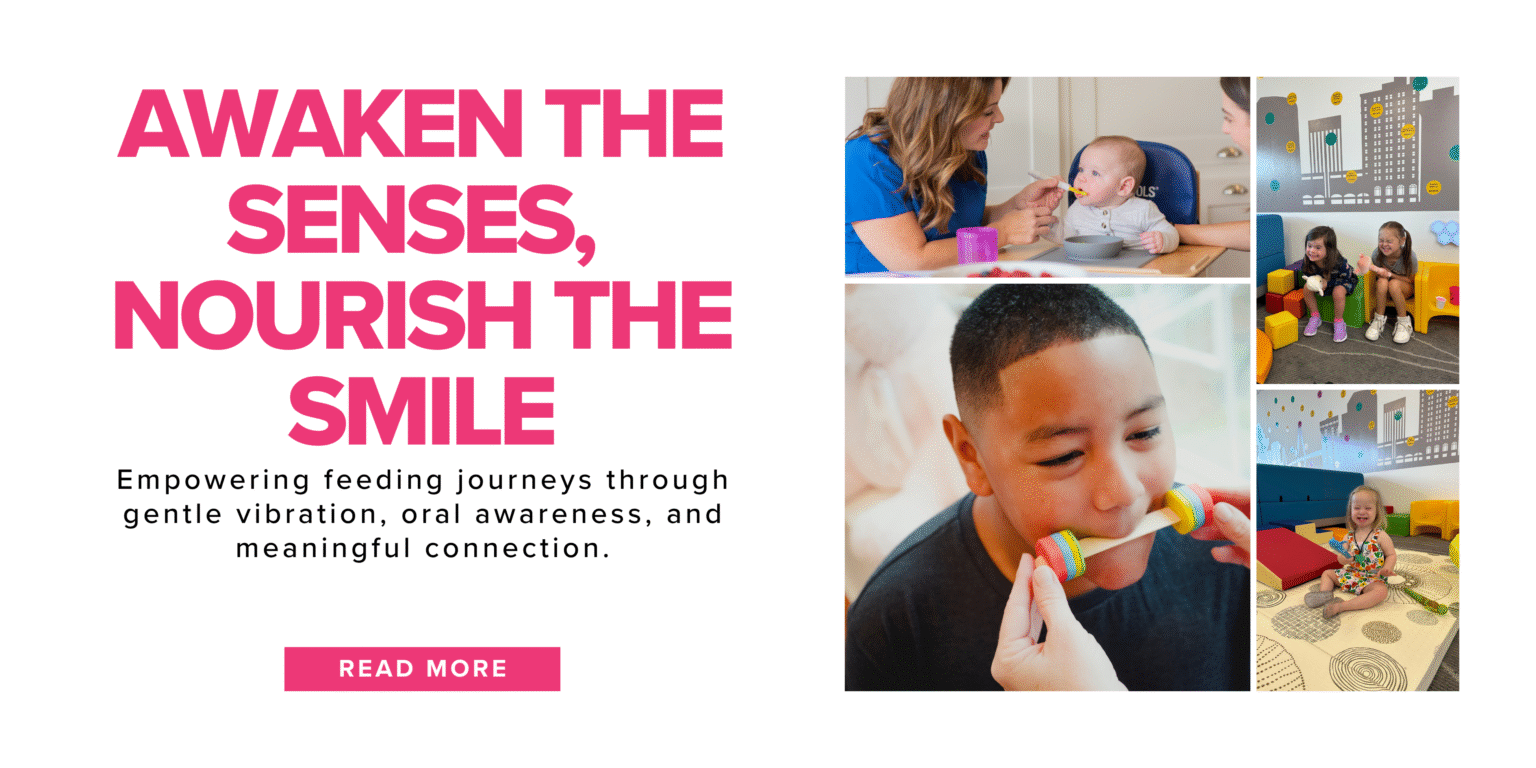Hi there,
I have just assessed an absolutely delightful little four-year-old boy with a diagnosis of Dystonic Cerebral Palsy. All four limbs are affected but the weakness is more apparent on the right side. My assessment has shown significant jaw weakness and instability—he begins to jaw jut and slide after three seconds of attempting a natural bite. In addition, he has not sufficiently dissociated jaw, lips, and tongue. He has weak core muscles and very weak airflow when he speaks. Articulation is mainly open vowels, with the occasional guttural /k g/ and /b/ produced with the upper teeth on the lower lip.
My main question has to do with his significant extension patterns. Whenever I present food or a tool to the right side of his mouth, it results in a large neck extension to the right with the left arm extending backward. He needs his dad to consistently hold his head in midline. When I work at midline (e.g., frontal spoon feeding, horns, and bubbles) the extensor pattern to the right is still present but less significant.
I’m concerned that focusing more on the right side (needed due to greater weakness there) will encourage further extensor patterns. Does anyone have experience with this and suggestions for effectively working on his right side? I wondered if doing bilateral placement for bite blocks and bite tubes would be advisable? Many thanks!
Lori’s response
Hi, and thank you for the question. I’ll start with one of my own: Is your client working with a PT and, if so, are they addressing trunk rotation? If you can co-treat, consider working on airflow in rotation. As I often say in courses, “What you see in the body is what you get in the mouth,” which is particularly relevant to your note about the upper teeth on the lower lip.
Positioning & handling
- Is he in a well-supported position when the extension occurs?
- Do extensor patterns appear in the upper/lower extremities with any movement?
- Try working from behind: sit hip-to-hip; use your upper arm to help maintain neutral cervical flexion while your fingers provide jaw/lower-lip support in a gentle “V” position. Place a mirror in front so he can see himself (and you).
Right-side work without feeding the pattern
You answered your own question—go bilateral first. Present the bite tubes bilaterally to establish symmetry. Then alternate bilateral ↔ unilateral to begin right-side focus (e.g., bilateral → right → bilateral → right). As tolerance improves, you may progress to 2× right : 1× left.
I would run a bite tube program before introducing the bite blocks.
Hope this helps—please keep me posted.



